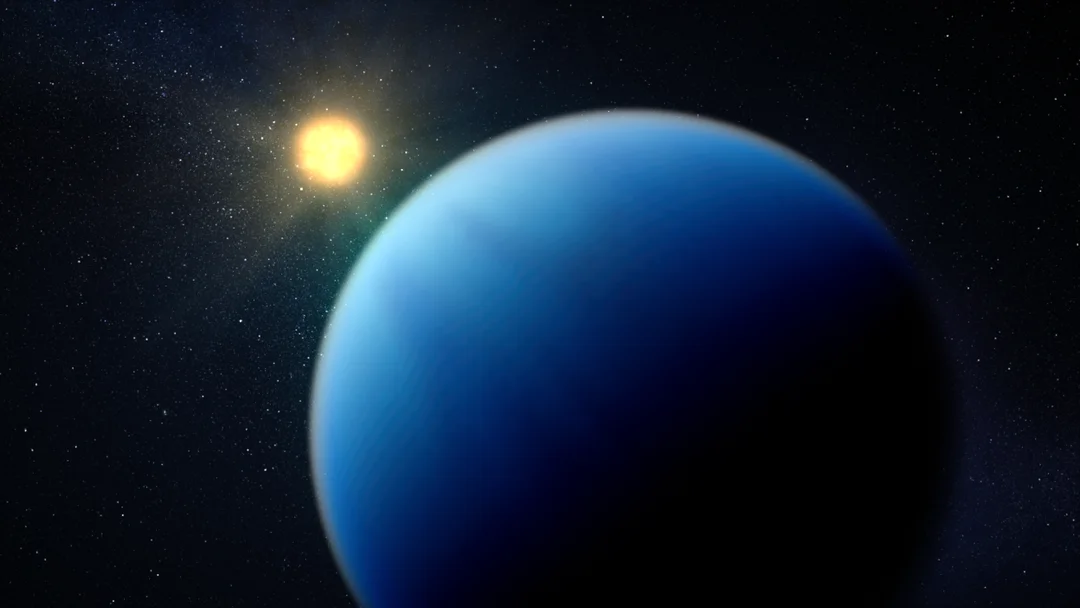
James Webb Telescope Unveils Secrets of ‘Hot’ Sub-Neptune Exoplanet TOI-421 b: A Glimpse into Exoplanet Diversity
For years, astronomers have been puzzled by sub-Neptunes, a common yet mysterious class of exoplanets not found in our solar system. These gassy, smaller cousins of Neptune are often shrouded in haze, making it difficult to study their atmospheres. Now, NASA's James Webb Space Telescope is changing the game by revealing the secrets of exoplanet TOI-421 b, a 'hot' sub-Neptune orbiting a sun-like star.
Eliza Kempton of the University of Maryland, College Park, a leading researcher on the project, expressed her excitement: "I had been waiting my entire career for Webb so that we could meaningfully characterize the atmospheres of these smaller planets." This observation is pivotal in understanding the formation and evolution of sub-Neptunes and why they are absent from our own solar system.
Previously discovered by the Kepler space telescope, sub-Neptunes presented a challenge because their atmospheres often appeared 'flat' or featureless, suggesting thick layers of clouds or haze. However, TOI-421 b, with its scorching temperature of approximately 1,340 degrees Fahrenheit, defied expectations.

Unlike many of its hazy counterparts, Webb revealed a clear atmosphere on TOI-421 b, allowing scientists to detect the presence of water vapor and tentative signatures of carbon monoxide and sulfur dioxide. Surprisingly, the team found a large amount of lightweight hydrogen, mirroring the composition of its host star. This discovery challenges previous assumptions about sub-Neptune atmospheres being dominated by heavier molecules.
Brian Davenport, a Ph.D. student at the University of Maryland, who conducted the primary data analysis, noted, "We saw spectral features that we attribute to various gases, and that allowed us to determine the composition of the atmosphere." This marks a significant step forward in exoplanet research.
The fact that TOI-421 b orbits a sun-like star, unlike other observed sub-Neptunes orbiting cooler red dwarfs, further complicates the picture. The team is now keen to observe more hot sub-Neptunes to determine if TOI-421 b is an anomaly or if it represents a broader trend.

"We've unlocked a new way to look at these sub-Neptunes," Davenport concluded. "These high-temperature planets are amenable to characterization; so, by looking at sub-Neptunes of this temperature, we're perhaps more likely to accelerate our ability to learn about these planets."
The findings were published recently in The Astrophysical Journal Letters and highlight the power of the James Webb Space Telescope in unraveling the universe's mysteries. Is TOI-421 b a unique case, or is it representative of a new class of exoplanets? What secrets about planetary formation and evolution will future observations reveal?
Share your thoughts and predictions in the comments below! What do you think makes TOI-421 b so different from other sub-Neptunes?